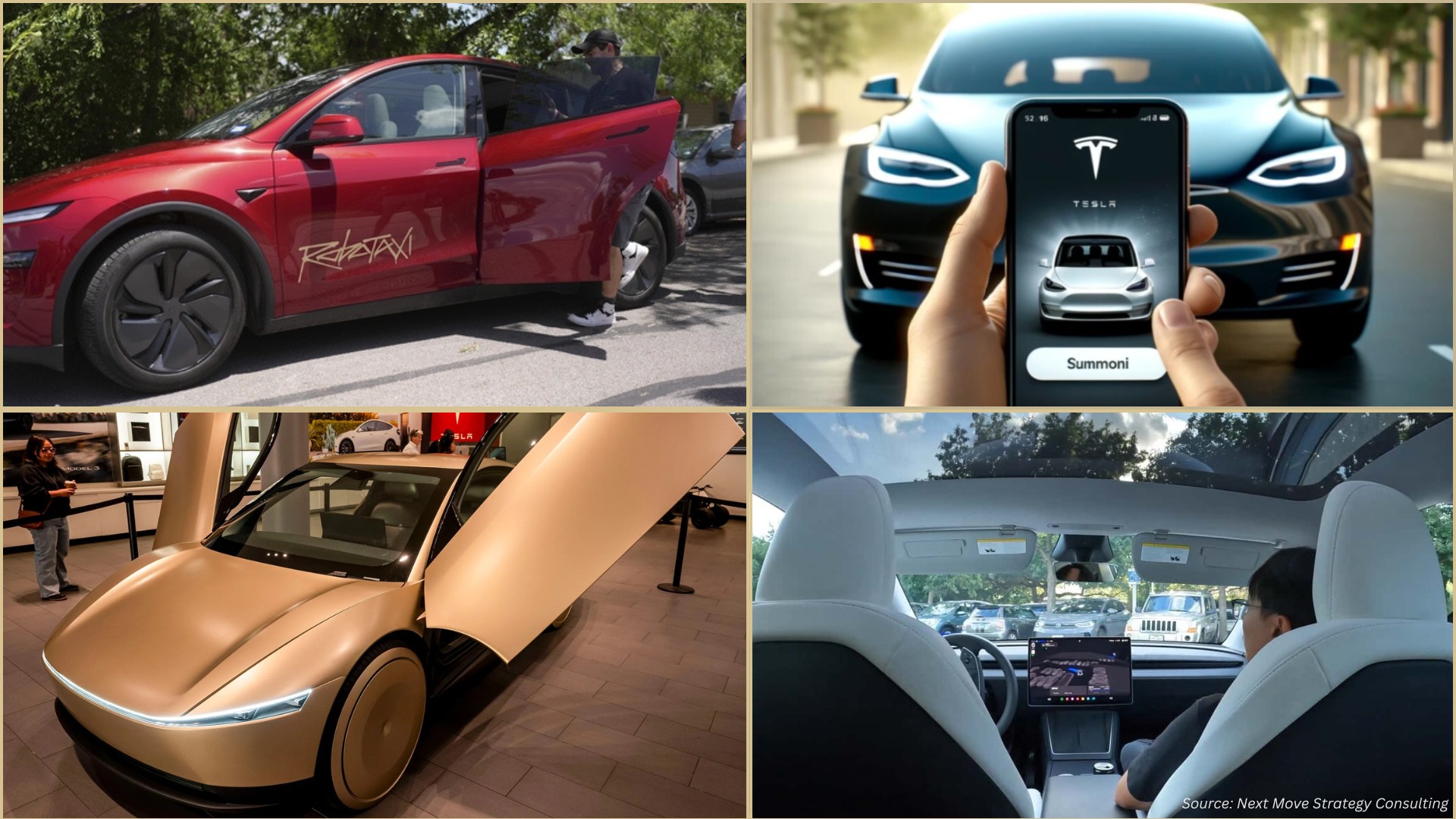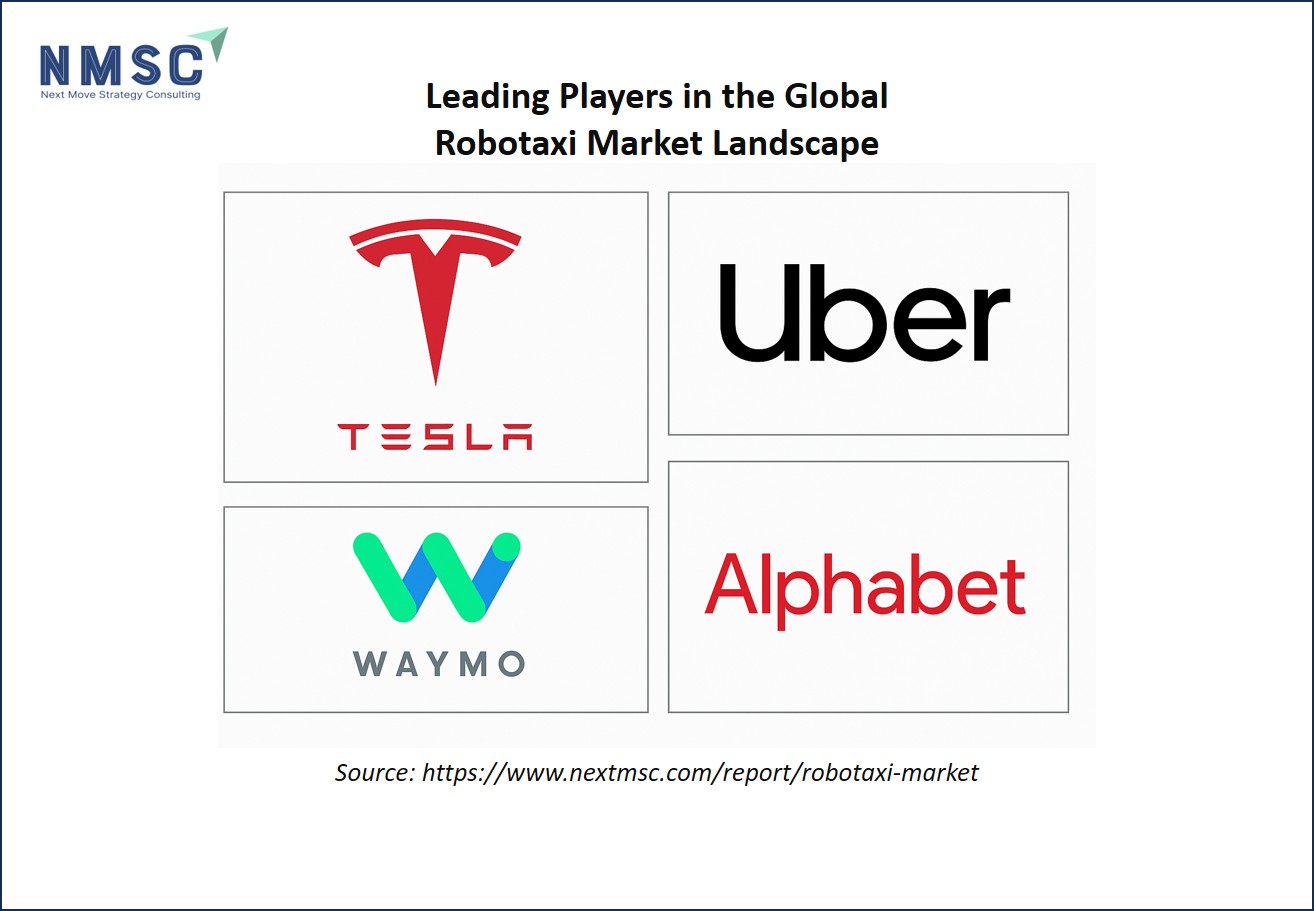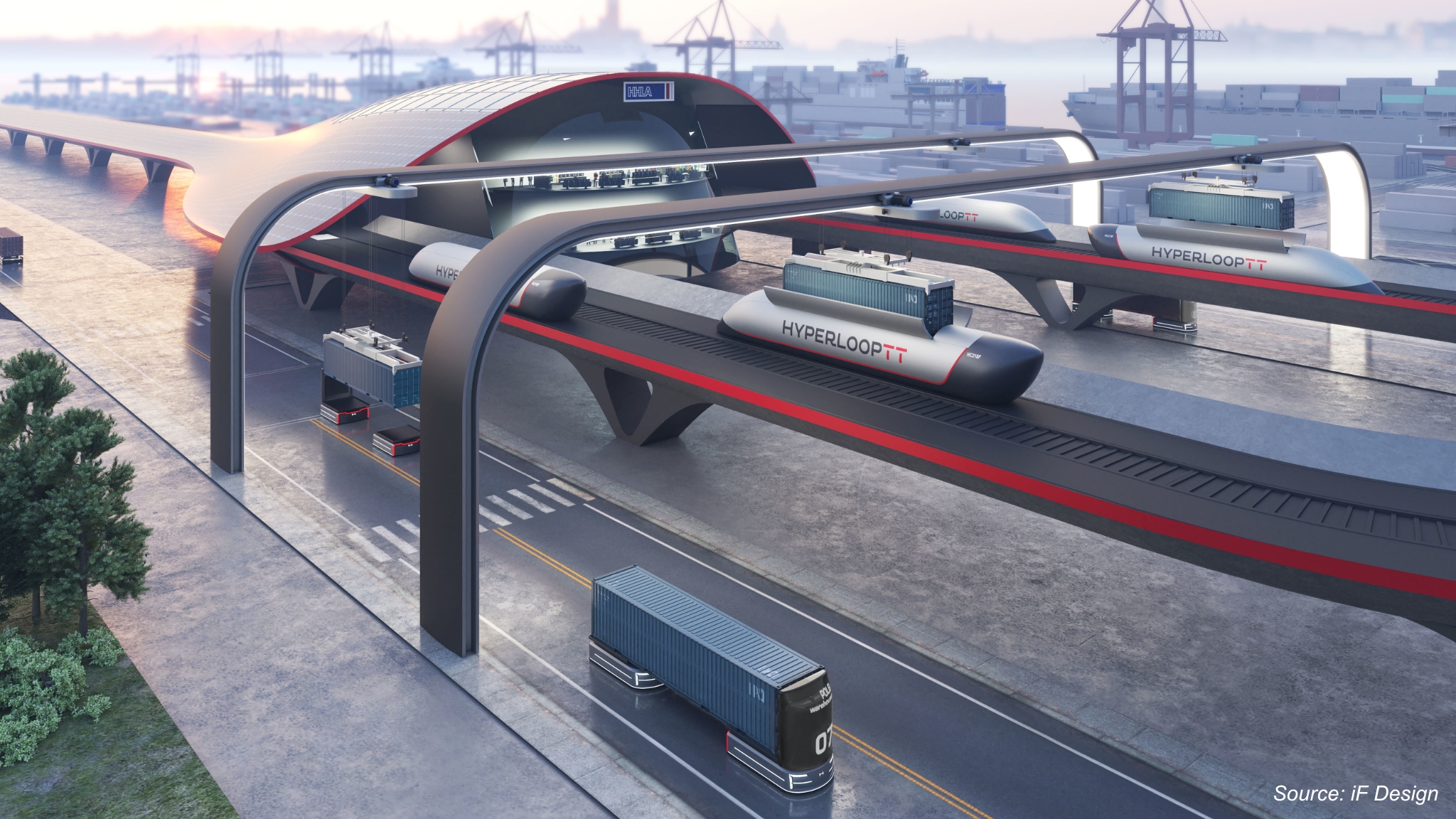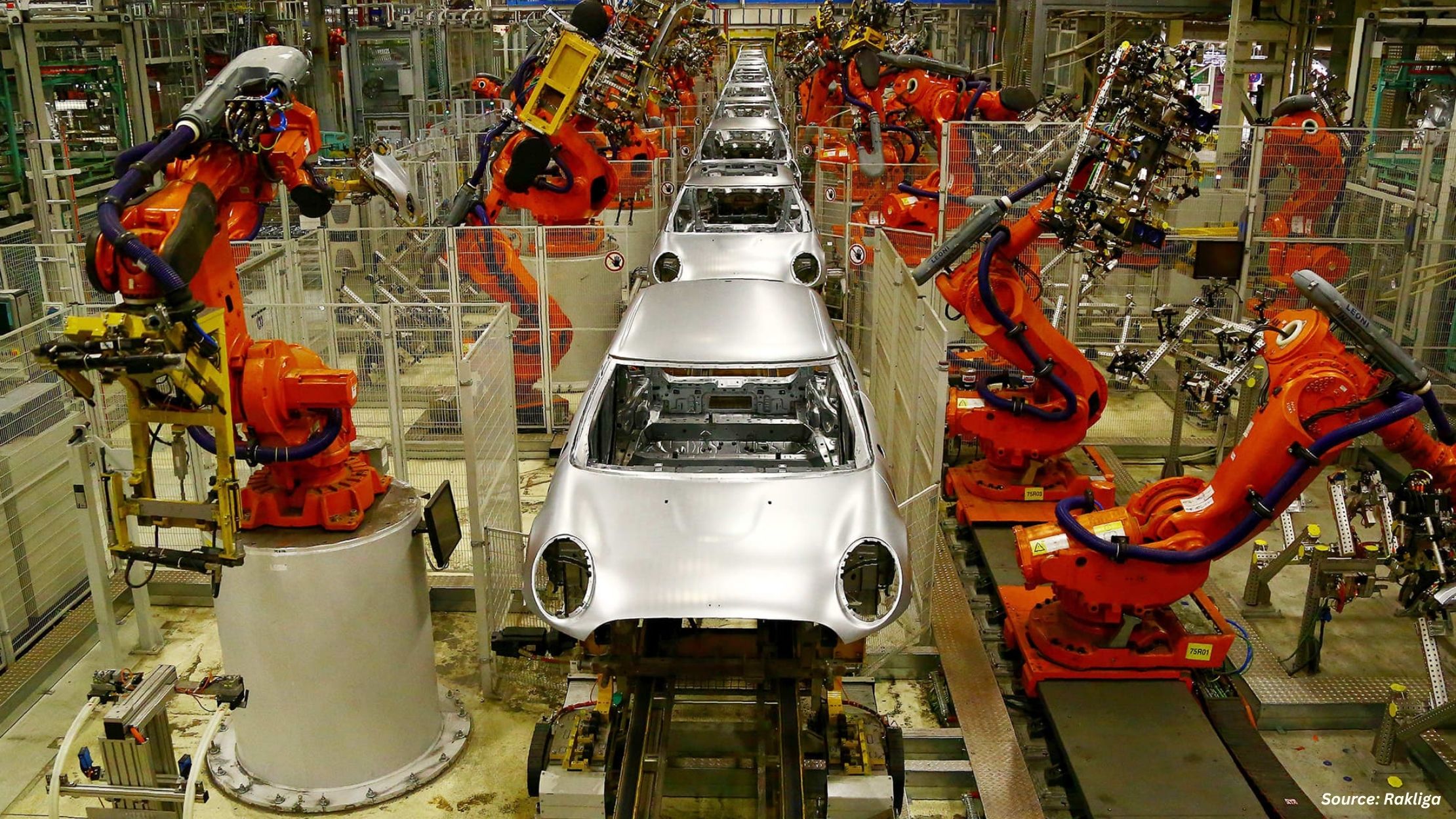Why Tech Giants and Automakers Are Investing Billions in Robotaxi Startups
Published: 2025-09-12

The robotaxi market is buzzing with activity as tech giants and automakers funnel billions into startups and their own autonomous driving ventures. Why is this sector attracting such massive investment? From urban mobility solutions to cutting-edge AI, the robotaxi industry promises to reshape transportation.
Let’s dive into the reasons behind this investment surge from 2024 and 2025.
What Is Driving the Robotaxi Market’s Explosive Growth?
The robotaxi market is projected to grow at a staggering pace, fueled by technological advancements and societal needs. According to a report by Next Move Strategy Consulting, the global robotaxi market is expected to reach USD 104.03 billion by 2030, with a CAGR of 74.5%.
This growth is driven by several key factors:
-
Urbanization and Traffic Congestion: According to the United Nations, the world’s population living in urban areas is expected to rise to 68% by 2050. Robotaxis offer efficient, on-demand transportation, reducing the need for private car ownership. With pilot programs already underway by industry leaders like Waymo, Baid and Zoox, self-driving taxis are expected to become a major player in future urban mobility, providing a more convenient and affordable way for people to get around.
-
Sustainability Goals: Governments worldwide are pushing for zero-emission vehicles. The latest Europe’s Environment — State and Outlook Report (SOER 2020) identified a range of measures implemented across Europe to accelerate the uptake of electric vehicles. These measures include financial support to the electric vehicle industry, public investments in charging infrastructure and subsidies for home chargers, and public procurement of electric vehicles for municipal fleets.
-
Cost Efficiency: Robotaxis eliminate driver costs, making them cheaper than traditional taxis. Mckinsey’s analysis shows that the cost per mile for a robo-taxi could drop by more than 50 percent between 2025 and 2030. The major drivers of this reduction include lower hardware costs due to declining costs of high-performance chips, operational improvements (such as lower maintenance needs and higher overall mileage), lower costs of mobility-services provisioning due to scale, a decrease in empty miles traveled, and greater economies of scale, which distribute development and validation costs across more vehicles.
The robotaxi market’s growth is propelled by urbanization, sustainability mandates, and cost advantages, making it a prime investment target.
Why Are Tech Giants Betting Big on Robotaxis?
Tech giants like Alphabet (Waymo’s parent) and Baidu are leading the charge in robotaxi development, leveraging their AI and data expertise. Here’s why they’re investing heavily:
-
AI and Machine Learning Advancements: Autonomous driving relies on sophisticated AI, including machine learning and sensor fusion:
-
Alphabet has reinforced its commitment to autonomous vehicle technology with a major $5 billion investment in its self-driving subsidiary, Waymo. The investment fuels Waymo’s aggressive robotaxi expansion plans, including the rollout of services across the San Francisco peninsula, greater Los Angeles, and Austin, Texas.
-
This initiative underscores Alphabet’s broader strategy to advance artificial intelligence, leveraging innovations developed in partnership with Waymo for its autonomous systems.
-
Currently, Waymo operates a fleet of over 600 robotaxis in Phoenix, San Francisco, and Los Angeles, maintaining its status as the only self-driving technology company with a large-scale commercial deployment of driverless vehicles in the U.S.
-
-
Data-Driven Scalability: Tech companies have vast data resources to train AI models. Waymo’s real-time data along with insights gained from over 20 million miles of real-world driving and more than 20 billion miles in simulation. Using advanced AI, it anticipates the behavior of other road users. It recognizes that cars, cyclists, pedestrians, and other objects move differently and quickly predicts the various possible paths each might take — all in a matter of milliseconds.
-
Mobility-as-a-Service (MaaS) Integration: Tech giants see robotaxis as a cornerstone of MaaS platforms:
-
In May 2023, Waymo partnered with Uber to integrate its autonomous technology into Uber’s platform, signaling a shift toward seamless ride-hailing ecosystems.
-
In September 2024, the companies expanded their partnership to include new cities where Waymo was launching its robotaxi services. This collaboration marks a significant milestone, as both companies share a common goal of becoming the preferred ride service for the public. Uber has established itself as a global leader in human-operated ride-hailing, while Waymo leads the autonomous vehicle sector with the largest fleet of driverless robotaxis currently operating in select U.S. cities.
-
How Are Automakers Joining the Robotaxi Race?
Traditional automakers like Tesla and Hyundai are not sitting on the sidelines. They’re investing billions to compete in the robotaxi space:
-
Tesla’s Cybercab Ambition: Tesla announced plans to test its robotaxi service in Austin, Texas, with a Safety-First Approach – starting with a limited fleet of 10 Model Y crossovers. CEO Elon Musk announced the rollout on CNBC, emphasizing a cautious deployment to prioritize safety while competing with established players like Waymo. This move marks Tesla’s entry into the ride-hailing industry, a significant step for electric vehicle (EV) enthusiasts and the broader autonomous driving landscape. Also, Tesla's Autopilot and Full Self-Driving (FSD) systems use AI to help cars drive themselves in specific situations. By collecting data from cameras, radar, and sensors, the systems recognize surroundings, make decisions, and navigate roads safely. Tesla’s cars fall into some of the safest self-driving cars, with 40 percent less accidents than others.
-
Hyundai’s Partnership with Motional: Hyundai’s Motional signed a 10-year deal with Uber. The 10-year, multi-market agreement between Motional and Uber aims to accelerate the widespread adoption of autonomous vehicles (AVs) by combining Motional’s advanced driverless technology with Uber’s vast customer network. Both companies share a vision of making AVs an affordable, convenient, and safe option for everyday transportation.
-
Strategic Pivots: In June 2024, Rimac, known for electric supercars (that merged with Bugatti), announced a shift to robotaxis with its Verne project, set to launch in Zagreb by 2026. The Verne robotaxi is built specifically for autonomous driving, using Mobileye’s self-driving system. Powered by cameras, radar, and lidar sensors, it’s designed to handle various road types, weather conditions, and local driving styles.
Automakers are investing in robotaxis to leverage their manufacturing capabilities, form strategic partnerships, and tap into the growing demand for autonomous vehicles.
What Role Do Partnerships and Regulatory Support Play?
Collaboration and government backing are critical to the robotaxi market’s expansion:
-
Key Partnerships:
-
GAC Aion, the electric vehicle subsidiary of Guangzhou Automobile Group (GAC Group), and DiDi Autonomous Driving have deepened their collaboration for a mass production of electric robotaxis, targeting integration into Didi’s network by 2025.
-
Uber and Waymo expand driverless ride service in two new major metros. It will exclusively manage and dispatch a new fleet of Waymo’s all-electric Jaguar I-PACE vehicles, providing services including vehicle cleaning and repair. Uber Technologies Inc. will be the sole app offering driverless rides in Alphabet Inc.’s Waymo cars in Austin and Atlanta, a boost to the rideshare app’s ambitions in the autonomous vehicle arena. The move deepens the two companies’ partnership, one of a string of tie-ups Uber has struck in a bid to position itself as a platform for commercializing autonomous vehicles. It’s a departure from its past ambitious yet costly endeavors to build self-driving car technology in-house.
-
-
Regulatory Support:
-
The Chinese government has set ambitious targets for the development of its self-driving car industry. By 2025, it aims for intelligent connected vehicles with partial and conditional automated driving capabilities to make up over 50% of all vehicle sales.
-
Additionally, 50% of new cars should be equipped with Cellular Vehicle-to-Everything (C-V2X) terminals. The government also plans to begin the commercial deployment of highly automated vehicles in specific, controlled environments. Looking ahead to 2035, the goal is to achieve widespread operation of connected vehicles with advanced automated driving capabilities across large areas of the country.
-
The EU has adopted the first international technical legislation for fully driverless vehicles, covering Level 4 automation such as urban shuttles and robotaxis. This legislation sets out a comprehensive framework to assess the safety and readiness of these vehicles before they are allowed on the EU market. It includes testing procedures, cybersecurity standards, data recording requirements, safety performance monitoring, and incident reporting obligations for manufacturers.
-
Germany is a global pioneer in developing a regulatory framework for autonomous driving. It became the first country to implement legislation permitting the use of autonomous motor vehicles on public roads. Since then, autonomous driving systems have been successfully tested across various use cases, setting a strong foundation for future advancements in the sector.
-
The Federal Cabinet has adopted a national strategy for autonomous driving in road transport, aiming to integrate self-driving cars into everyday traffic. This strategy sets the framework to further develop the technology and harness its vast potential. The overarching goal is to establish Germany as a global leader in innovation and production within the autonomous driving sector.
-
Partnerships between tech firms, automakers, and ride-hailing platforms, combined with supportive regulations, are accelerating robotaxi adoption.
What Are the Challenges Holding Back Investment?
Despite the hype, the robotaxi market faces significant hurdles:
-
Regulatory Complexity: Challenges related to data quality, standardization, and interoperability remain significant in the development of autonomous vehicles across the APAC region. Ensuring consistent data quality, creating unified standards, and achieving seamless interoperability among diverse developers and technologies are ongoing hurdles. The fast pace of technological advancements in autonomous driving often surpasses the speed of regulatory development, leaving many countries without clear legal frameworks to address data security concerns.
-
Safety Concerns: Tesla’s robotaxi testing in 2025 faced scrutiny from U.S. regulators over safety protocols accused of breaking traffic laws.
Regulatory hurdles and safety concerns pose challenges, but ongoing innovation and collaboration are mitigating these risks.
What Does the Future Hold for Robotaxi Investments?
The robotaxi market is poised for transformative growth. Robotaxi investments top $2B, marking a pivotal shift in autonomous vehicle growth
-
Massive Investments Fueling Growth: Autonomous vehicle companies—including Waymo, Cruise, Baidu Apollo, Pony.ai, WeRide, and others—have attracted billions in funding. This collective investor confidence has been instrumental in moving the robotaxi sector from testing to commercialization.
-
Key Players Scaling Operations: Technologies developed by Waymo, Pony.ai, WeRide, Baidu Apollo, and others have enabled large-scale deployment and strategic expansion. These firms are increasingly recognized for operational scale, market reach, and rapid commercialization capabilities.
-
Economic Potential: Projections vary, but some estimates suggest that autonomous taxis could add trillions to global GDP by 2030. ARK Invest’s analysis alone estimates potential added value of up to ~$26 trillion, possibly making robotaxis one of the most transformative innovations in modern history.
-
Technology and Infrastructure Efficiency: The sector benefits from ongoing improvements in safety testing, large-scale data usage from real-world and simulation-driven driving miles, cost reductions in Level 4 hardware, and economies of scale in production. These make robotaxis more viable for widespread deployment.
Next Steps: How to Navigate the Robotaxi Investment Landscape
For businesses, investors, or policymakers looking to engage with the robotaxi market, here are actionable takeaways:
-
Invest in AI and Sensor Technology: Focus on startups developing affordable LiDAR and AI solutions to reduce costs and enhance safety.
-
Form Strategic Partnerships: Collaborate with tech firms, automakers, or ride-hailing platforms to share resources and accelerate deployment.
-
Monitor Regulatory Changes: Stay updated on regional laws to ensure compliance and capitalize on government incentives.
-
Prioritize Sustainability: Invest in electric robotaxi fleets to align with global emission reduction goals.
-
Enhance User Experience: Develop features like mobile app integration and personalized settings to attract customers.
Conclusion:
The robotaxi market is a hotbed of opportunity, driven by technological innovation, urban needs, and sustainability goals. Tech giants and automakers are investing billions to lead this revolution, but success hinges on overcoming regulatory and technical challenges. By aligning with these trends, stakeholders can shape the future of autonomous mobility.
About the Author
 Sneha Chakraborty is an experienced SEO Executive and Content Writer with 4+ years in digital marketing. She excels at boosting online visibility and engagement through data-driven strategies and creative content. Passionate about simplifying digital concepts, she makes them accessible to diverse audiences. Outside work, she enjoys reading, sketching, and nature photography.
Sneha Chakraborty is an experienced SEO Executive and Content Writer with 4+ years in digital marketing. She excels at boosting online visibility and engagement through data-driven strategies and creative content. Passionate about simplifying digital concepts, she makes them accessible to diverse audiences. Outside work, she enjoys reading, sketching, and nature photography.
About the Reviewer
 Debashree Dey is a skilled Content Writer, PR Specialist, and Assistant Manager with strong expertise in Digital Marketing. She specializes in crafting visibility strategies and delivering impactful, data-driven campaigns. Passionate about creating engaging, audience-focused content, she helps brands strengthen their online presence. Beyond work, she draws inspiration from creative projects and design pursuits.
Debashree Dey is a skilled Content Writer, PR Specialist, and Assistant Manager with strong expertise in Digital Marketing. She specializes in crafting visibility strategies and delivering impactful, data-driven campaigns. Passionate about creating engaging, audience-focused content, she helps brands strengthen their online presence. Beyond work, she draws inspiration from creative projects and design pursuits.

















Add Comment